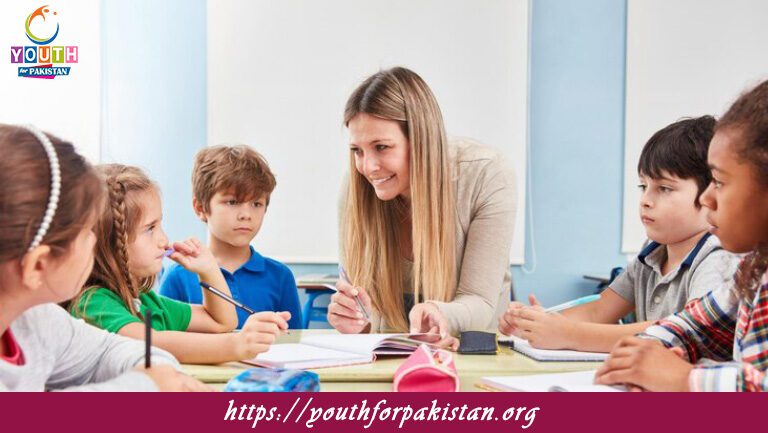Welcome to the Pedagogy MCQs with Answers. In this post, we have shared a Pedagogy Online Test for different competitive exams. Find practice questions with answers of the Pedagogy test online multiple choice questions with answers here. Each question offers a chance to enhance your knowledge regarding Pedagogy.
Which of the following is the most important element of the teaching-learning process?
a) Teacher
b) Student
c) Textbook
d) Curriculum
What is the primary goal of formative assessment?
a) Assigning grades
b) Identifying areas for improvement
c) Ranking students
d) Preparing students for final exams
Constructivist teaching is based on which of the following principles?
a) Students learn by memorization
b) Learning is an active process
c) Knowledge is transmitted from teacher to student
d) Learning occurs through reinforcement
Bloom’s taxonomy is used to classify educational objectives in which of the following domains?
a) Cognitive, affective, and psychomotor
b) Behavioral, cognitive, and affective
c) Psychomotor, affective, and behavioral
d) Cognitive, emotional, and social
Which teaching method emphasizes student exploration and discovery?
a) Direct instruction
b) Lecture method
c) Inquiry-based learning
d) Drill and practice
What is the primary focus of differentiated instruction?
a) Using the same teaching method for all students
b) Adapting teaching methods to meet diverse student needs
c) Focusing on the most advanced students
d) Ensuring all students receive the same assignments
What is the primary characteristic of a reflective teacher?
a) Mastery of subject matter
b) Regularly evaluates and improves their teaching practices
c) Strict classroom management
d) High expectations for students
Which of the following is an example of a summative assessment?
a) Mid-term exam
b) Classroom discussion
c) Weekly quiz
d) Homework assignment
What is the role of a teacher in a student-centered classroom?
a) To deliver lectures
b) To facilitate learning
c) To enforce discipline
d) To assess students regularly
What is the primary benefit of cooperative learning?
a) It reduces the teacher’s workload
b) It promotes competition among students
c) It enhances social and communication skills
d) It ensures individual accountability
Which of the following is an example of intrinsic motivation?
a) Working for a reward
b) Studying to avoid punishment
c) Learning for the love of knowledge
d) Participating in an activity to win a prize
Which educational theory emphasizes the role of social interaction in learning?
a) Behaviorism
b) Constructivism
c) Social learning theory
d) Cognitive theory
What is scaffolding in the context of education?
a) Providing direct instruction throughout the learning process
b) Giving students only the correct answers
c) Offering temporary support to help students reach higher levels of understanding
d) Allowing students to work independently without guidance
Which of the following is a characteristic of effective feedback?
a) Vague and general
b) Delayed until the end of the term
c) Specific and actionable
d) Given only to the top students
What is the purpose of a learning objective?
a) To outline the course content
b) To provide a detailed syllabus
c) To describe the skills and knowledge students should acquire
d) To assess student performance
What does the term ‘zone of proximal development’ (ZPD) refer to?
a) The gap between what a student knows and what a teacher knows
b) The difference between what a student can do independently and what they can do with help
c) The level of development a student should achieve by the end of a term
d) The range of subjects a student is studying
What is the main focus of behaviorist learning theories?
a) The mental processes involved in learning
b) The influence of environment on behavior
c) The role of motivation in learning
d) The development of critical thinking skills
Which of the following best describes metacognition?
a) Thinking about thinking
b) Learning through imitation
c) Memorizing facts and figures
d) Solving problems through trial and error
What is a key feature of project-based learning?
a) Teacher-directed lessons
b) Focus on rote memorization
c) Student-driven investigations
d) Emphasis on multiple-choice tests
Which of the following is an example of extrinsic motivation?
a) Reading a book for enjoyment
b) Completing a task to earn a reward
c) Learning a new skill for personal satisfaction
d) Studying a subject out of curiosity
What does ‘active learning’ involve?
a) Listening to a lecture
b) Taking notes during a presentation
c) Engaging students in activities that promote analysis and synthesis
d) Memorizing information from a textbook
What is the purpose of a rubric?
a) To outline course content
b) To grade student performance based on specific criteria
c) To test students’ knowledge
d) To measure student attendance
Which of the following is a characteristic of a flipped classroom?
a) Students watch lectures at home and do homework in class
b) Teachers give lectures in class and assign homework after school
c) All learning takes place in the classroom
d) Students learn exclusively through textbooks
What does the term ‘inquiry-based learning’ refer to?
a) Learning through memorization and recitation
b) Teacher-led instruction with limited student interaction
c) Learning that begins with questions and exploration
d) Studying in isolation without peer interaction
Which of the following best defines ‘critical thinking’?
a) Accepting information without question
b) Analyzing and evaluating information to form a judgment
c) Memorizing facts and figures
d) Learning by repeating information
What does ‘differentiated instruction’ aim to address?
a) The same instructional approach for all students
b) The varying learning needs of students
c) Standardized testing
d) Teacher-centered instruction
What is the primary characteristic of experiential learning?
a) Learning through direct experience
b) Learning by listening to lectures
c) Learning through reading and writing
d) Learning by completing worksheets
What is the role of assessment in the learning process?
a) To rank students
b) To evaluate the effectiveness of teaching
c) To measure student understanding and guide instruction
d) To assign grades only
What is the main purpose of using manipulatives in teaching mathematics?
a) To provide visual aids
b) To promote rote memorization
c) To help students understand abstract concepts through hands-on experience
d) To make lessons more entertaining
What is the primary benefit of using formative assessments?
a) To determine final grades
b) To monitor student learning and provide feedback
c) To rank students in the class
d) To assess teacher performance
Which of the following strategies is most effective in promoting student engagement?
a) Lecture-based teaching
b) Collaborative group work
c) Strict classroom rules
d) Independent reading
What does ‘universal design for learning’ (UDL) emphasize?
a) A one-size-fits-all approach to education
b) Designing learning experiences that accommodate diverse learners
c) Teaching the same way to all students
d) Focusing solely on students with disabilities
What is ‘formative assessment’ primarily used for?
a) Assigning final grades
b) Monitoring student progress during instruction
c) Standardized testing
d) Summarizing overall achievement
Which of the following is an example of a higher-order thinking skill?
a) Memorizing facts
b) Reciting information
c) Analyzing and evaluating arguments
d) Identifying vocabulary words
What is the main purpose of a lesson plan?
a) To provide a script for the teacher
b) To outline the content and structure of a lesson
c) To fill time during class
d) To provide reading material for students
What is ‘differentiation’ in the context of teaching?
a) Teaching the same way to all students
b) Varying instruction to meet the diverse needs of students
c) Focusing solely on advanced learners
d) Implementing standardized tests
What is the primary role of a teacher in a student-centered classroom?
a) To lecture for most of the class time
b) To facilitate and guide student learning
c) To assess students’ performance only
d) To maintain strict discipline
What does the term ‘scaffolding’ refer to in education?
a) Teaching without any support
b) Gradually reducing teacher support as students become more competent
c) Directly providing all answers to students
d) Only providing assistance when students ask for it
What is ‘cognitive development’ primarily concerned with?
a) Physical growth
b) Emotional well-being
c) Mental processes and learning
d) Social interactions
What does ‘self-regulated learning’ emphasize?
a) Teacher-directed instruction
b) Students’ ability to manage their own learning process
c) Relying on external rewards
d) Learning through repetition
What is the goal of using ‘open-ended questions’ in the classroom?
a) To assess factual knowledge
b) To encourage critical thinking and discussion
c) To limit students’ responses
d) To provide correct answers quickly
Which of the following is an example of an ‘authentic assessment’?
a) Multiple-choice test
b) Real-world problem-solving task
c) True/false quiz
d) Fill-in-the-blank worksheet
What is the primary advantage of peer tutoring?
a) Reduces teacher workload
b) Enhances learning through collaboration and peer interaction
c) Ensures that all students learn at the same pace
d) Focuses on the most advanced students
What does ‘holistic education’ aim to develop?
a) Only academic skills
b) Physical and social skills
c) The whole person, including intellectual, emotional, social, and physical development
d) Standardized test scores
What is the purpose of using ‘graphic organizers’ in teaching?
a) To make content more complex
b) To help students visualize relationships between concepts
c) To replace written assignments
d) To fill class time
What is the main focus of ‘differentiated instruction’?
a) Using the same teaching methods for all students
b) Adjusting teaching methods to meet individual learning needs
c) Focusing only on students who are struggling
d) Preparing students for standardized tests
What is ‘student-centered learning’?
a) Learning driven by teacher instruction
b) Learning that focuses on student interests and needs
c) Learning that occurs only outside the classroom
d) Learning that is entirely self-directed
What does ‘constructivism’ in education emphasize?
a) Memorization of facts
b) Learning as an active, contextualized process of constructing knowledge
c) Teacher-centered instruction
d) Standardized testing
What is the primary benefit of using ‘problem-based learning’?
a) It prepares students for standardized tests
b) It engages students in real-world problem-solving
c) It simplifies the learning process
d) It focuses on rote memorization
What is the purpose of ‘action research’ in education?
a) To conduct scientific experiments
b) To improve teaching practices through systematic inquiry
c) To evaluate standardized tests
d) To collect data on student behavior
If you are interested to enhance your knowledge regarding Physics, Chemistry, Computer, and Biology please click on the link of each category, you will be redirected to dedicated website for each category.










